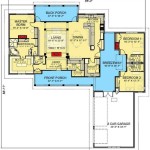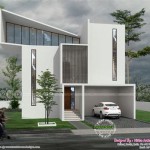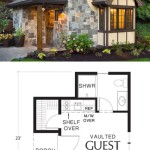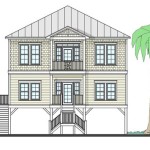A residential house plan is a detailed drawing or set of drawings that outlines the design and structure of a house. It typically includes floor plans, elevations, and sections, and provides information on the size, shape, and layout of the house, as well as the location of doors, windows, and other features.
Residential house plans are essential for the construction of any new house. They provide a roadmap for the construction process, ensuring that the house is built according to the owner’s specifications and that it meets all building codes and regulations. House plans can be created by architects, engineers, or draftsmen, and can be customized to meet the specific needs of the homeowner.
In the following sections, we will explore the different types of residential house plans, discuss the process of creating a house plan, and provide tips on choosing the right house plan for your needs.
When creating a residential house plan, there are several important points to consider:
- Layout: The layout of the house should be functional and efficient, with rooms flowing well together.
- Size: The size of the house should be appropriate for the needs of the homeowner.
- Style: The style of the house should reflect the homeowner’s taste and preferences.
- Materials: The materials used to build the house should be durable and weather-resistant.
- Energy efficiency: The house should be designed to be energy efficient, with features such as insulation and double-glazed windows.
- Budget: The cost of building the house should be within the homeowner’s budget.
- Building codes: The house must be designed in accordance with all applicable building codes and regulations.
- Future needs: The house should be designed to accommodate the homeowner’s future needs, such as adding a room or expanding the kitchen.
By considering these important points, homeowners can create a residential house plan that meets their specific needs and desires.
Layout: The layout of the house should be functional and efficient, with rooms flowing well together.
The layout of a house is one of the most important factors to consider when creating a residential house plan. A well-designed layout will make the house more comfortable and enjoyable to live in, while a poorly-designed layout can make even a large house feel cramped and uncomfortable.
There are a few key principles to keep in mind when designing the layout of a house:
- Flow: The rooms in a house should flow well together, with a logical progression from one room to the next. This will make it easy to move around the house and will help to create a sense of spaciousness.
- Function: The layout of the house should be functional, with the rooms arranged in a way that makes sense for the way you live. For example, the kitchen should be located near the dining room and the bedrooms should be located near the bathrooms.
- Privacy: The layout of the house should provide privacy for the occupants. The bedrooms should be located in a quiet area of the house, and the bathrooms should be designed to be private.
By following these principles, you can create a residential house plan that has a layout that is both functional and efficient.
Specific Considerations for Different Rooms
When designing the layout of a house, it is important to consider the specific needs of each room. For example, the kitchen should be designed to be a functional workspace, with plenty of counter space and storage. The living room should be designed to be a comfortable and inviting space for relaxing and entertaining guests. The bedrooms should be designed to be private and restful.
By considering the specific needs of each room, you can create a residential house plan that meets the needs of your family and lifestyle.
Size: The size of the house should be appropriate for the needs of the homeowner.
The size of a house is one of the most important factors to consider when creating a residential house plan. The size of the house should be appropriate for the needs of the homeowner, taking into account the number of people who will be living in the house, the homeowner’s lifestyle, and the amount of space that is needed for different activities.
- Number of people: The number of people who will be living in the house is a key factor to consider when determining the size of the house. A larger family will need a larger house with more bedrooms and bathrooms, while a single person or a couple may be able to get by with a smaller house.
- Lifestyle: The homeowner’s lifestyle is also a factor to consider when determining the size of the house. A family with young children will need a house with a large backyard and plenty of space for the children to play, while a couple who enjoys entertaining guests may need a house with a large living room and dining room.
- Space for different activities: The amount of space that is needed for different activities is also a factor to consider when determining the size of the house. A family with a lot of hobbies may need a house with a dedicated hobby room or workshop, while a couple who enjoys cooking may need a house with a large kitchen.
By considering these factors, homeowners can determine the appropriate size for their residential house plan.
Style: The style of the house should reflect the homeowner’s taste and preferences.
The style of a house is one of the most important factors to consider when creating a residential house plan. The style of the house should reflect the homeowner’s taste and preferences, and it should also be appropriate for the location of the house and the surrounding neighborhood.
There are many different styles of houses to choose from, including traditional, contemporary, modern, and rustic. Each style has its own unique, and the best style for a particular house will depend on the homeowner’s individual tastes and preferences.
When choosing a style for a house, it is important to consider the following factors:
- The homeowner’s taste and preferences: The style of the house should reflect the homeowner’s taste and preferences. The homeowner should choose a style that they love and that they will be happy to live in for many years to come.
- The location of the house: The style of the house should be appropriate for the location of the house. A traditional style house may be more appropriate for a house in a historic neighborhood, while a contemporary style house may be more appropriate for a house in a modern neighborhood.
- The surrounding neighborhood: The style of the house should also be compatible with the surrounding neighborhood. A house that is too different from the other houses in the neighborhood may not be welcomed by the community.
By considering these factors, homeowners can choose a style for their house that reflects their taste and preferences, and that is also appropriate for the location of the house and the surrounding neighborhood.
Materials: The materials used to build the house should be durable and weather-resistant.
The materials used to build a house have a significant impact on its durability, weather resistance, and overall performance. When choosing materials for a residential house plan, it is important to consider the following factors:
- Climate: The climate in which the house will be built will have a major impact on the materials that are used. In areas with extreme weather conditions, such as high winds, heavy rain, or snow, it is important to choose materials that are resistant to these conditions.
- Durability: The materials used to build the house should be durable and able to withstand the test of time. This means choosing materials that are resistant to rot, decay, and insects.
- Weather resistance: The materials used to build the house should be weather-resistant and able to protect the house from the elements. This means choosing materials that are resistant to moisture, heat, and cold.
- Cost: The cost of the materials used to build the house is also an important factor to consider. Some materials are more expensive than others, so it is important to choose materials that fit within the budget.
By considering these factors, homeowners can choose the right materials for their residential house plan and ensure that their house is built to last.
- Wood: Wood is a popular choice for building houses because it is strong, durable, and relatively inexpensive. However, wood is susceptible to rot and decay, so it is important to choose wood that is treated to resist these problems.
- Brick: Brick is another popular choice for building houses because it is fire-resistant, durable, and weather-resistant. However, brick is more expensive than wood, and it can be difficult to find skilled bricklayers.
- Concrete: Concrete is a strong, durable, and fire-resistant material that is often used to build foundations and walls. However, concrete is not as weather-resistant as brick or wood, so it is important to apply a sealant to protect it from the elements.
- Steel: Steel is a strong and durable material that is often used to build skyscrapers and other large buildings. However, steel is more expensive than wood or brick, and it is susceptible to rust, so it is important to protect it from the elements.
By understanding the different types of materials that are available and their pros and cons, homeowners can make informed decisions about the materials to use for their residential house plan.
Energy efficiency: The house should be designed to be energy efficient, with features such as insulation and double-glazed windows.
Energy efficiency is an important consideration for any residential house plan. A well-designed, energy-efficient house can save the homeowner money on energy bills and help to reduce the impact of the house on the environment.
- Insulation: Insulation is one of the most important factors in creating an energy-efficient house. Insulation helps to keep the house warm in the winter and cool in the summer, reducing the need for heating and cooling. There are many different types of insulation available, so it is important to choose the right type for the climate and the house.
- Double-glazed windows: Double-glazed windows are another important feature of an energy-efficient house. Double-glazed windows have two panes of glass separated by a vacuum or gas, which helps to insulate the house and reduce heat loss. Double-glazed windows are more expensive than single-glazed windows, but they can save the homeowner money on energy bills in the long run.
- Energy-efficient appliances: Energy-efficient appliances use less energy to operate, which can save the homeowner money on energy bills. When choosing appliances for the house, it is important to look for the Energy Star label, which indicates that the appliance meets certain energy efficiency standards.
- Renewable energy sources: Renewable energy sources, such as solar panels and wind turbines, can be used to generate electricity for the house. This can help to reduce the homeowner’s reliance on fossil fuels and save money on energy bills.
By incorporating these features into the house plan, homeowners can create a more energy-efficient house that is more comfortable, healthier, and more affordable to operate.
Budget: The cost of building the house should be within the homeowner’s budget.
The cost of building a house is a major consideration for any homeowner. It is important to create a realistic budget before starting the design process, and to stick to it as closely as possible. There are a number of factors that will affect the cost of building a house, including the size of the house, the materials used, the complexity of the design, and the location of the house.
- Size of the house: The size of the house is one of the biggest factors that will affect the cost of building. A larger house will require more materials and labor to build, and will therefore be more expensive. It is important to carefully consider the size of the house that you need, and to make sure that it fits within your budget.
- Materials used: The materials used to build the house will also have a significant impact on the cost. Some materials, such as brick and stone, are more expensive than others, such as wood and vinyl. It is important to choose materials that are durable and weather-resistant, but that also fit within your budget.
- Complexity of the design: The complexity of the design will also affect the cost of building the house. A house with a simple design will be less expensive to build than a house with a complex design. If you are on a tight budget, it is important to choose a simple design that will still meet your needs.
- Location of the house: The location of the house will also affect the cost of building. Building a house in a rural area will be less expensive than building a house in an urban area. This is because land is typically less expensive in rural areas, and there are fewer regulations to comply with.
It is important to work with a qualified contractor to get an accurate estimate of the cost of building your house. The contractor will be able to take into account all of the factors listed above, and will be able to provide you with a realistic budget.
Building codes: The house must be designed in accordance with all applicable building codes and regulations.
Building codes are a set of regulations that govern the construction of buildings. These codes are in place to ensure that buildings are safe and habitable, and to protect the public from hazards such as fire, structural collapse, and electrical shock. Building codes are developed by local, state, and federal governments, and they can vary from place to place. It is important to be aware of the building codes that apply to your area before you start designing your house.
Building codes typically address a wide range of issues, including:
- Structural requirements
- Fire safety
- Electrical safety
- Plumbing safety
- Energy efficiency
- Accessibility
When designing your house, it is important to make sure that the plans comply with all applicable building codes. This will ensure that your house is safe and habitable, and that it meets the minimum standards required by law.
Building codes are constantly being updated to reflect new technologies and construction methods. It is important to stay up-to-date on the latest building codes, so that you can be sure that your house is built to the highest standards.
If you are not familiar with building codes, it is a good idea to hire a qualified architect or engineer to help you design your house. These professionals will be familiar with the building codes in your area, and they can help you to ensure that your house is compliant.
Future needs: The house should be designed to accommodate the homeowner’s future needs, such as adding a room or expanding the kitchen.
When designing a residential house plan, it is important to consider the homeowner’s future needs. This means thinking about how the house will be used in the years to come, and making sure that the design can accommodate those needs.
For example, if the homeowner is planning to have children in the future, it is a good idea to include extra bedrooms and bathrooms in the design. If the homeowner is planning to retire in the house, it is a good idea to include features such as a first-floor bedroom and bathroom, and wider doorways and hallways to accommodate wheelchairs.
It is also important to consider the homeowner’s lifestyle and hobbies when designing the house. If the homeowner enjoys cooking, it is a good idea to include a large kitchen with plenty of counter space and storage. If the homeowner enjoys gardening, it is a good idea to include a dedicated gardening space in the backyard.
By considering the homeowner’s future needs, it is possible to create a house plan that will meet their needs for many years to come.
Here are some specific examples of how to design a house to accommodate future needs:
- Add a room: If the homeowner is planning to have children in the future, it is a good idea to include extra bedrooms in the design. These bedrooms can be used as guest rooms or offices until they are needed for children.
- Expand the kitchen: If the homeowner enjoys cooking, it is a good idea to include a large kitchen with plenty of counter space and storage. The kitchen can be expanded by adding an island or a breakfast nook.
- Add a first-floor bedroom and bathroom: If the homeowner is planning to retire in the house, it is a good idea to include a first-floor bedroom and bathroom. This will allow the homeowner to age in place and avoid having to move to a smaller home.
- Widen doorways and hallways: If the homeowner is concerned about accessibility, it is a good idea to widen doorways and hallways. This will make it easier for the homeowner to move around the house in a wheelchair or walker.
By considering the homeowner’s future needs, it is possible to create a house plan that will meet their needs for many years to come.



.jpg)





Related Posts








